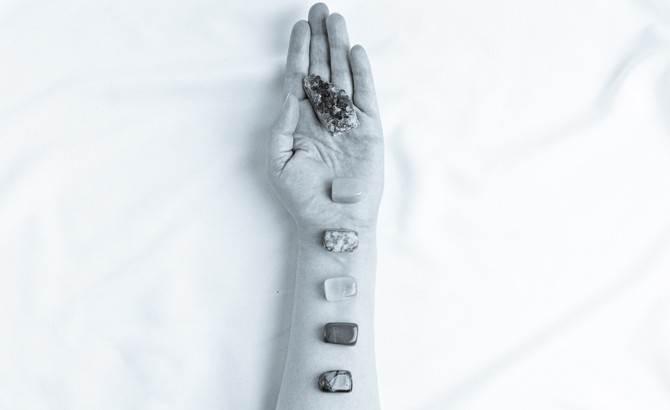Balancing Chakra energy
Chakra is the Sanskrit word for wheel, and the seven chakras, or energy centers, in the human body, lie in a line down the center of the body, from the base of the spine to the dome of the skull, although some practitioners include additional chakras beyond the physical boundaries of the body, locating them in the person’s aura. Each chakra is supposed to relate to the energy flow and health of different organs, parts of the body, and emotional states, with colors, elements and even physical diseases connected to them, in much the same way planets are said to ‘rule’ certain areas of our lives in astrology. However, there is no consensus about the specifics of which chakras relate exactly to which body parts or ailments.
The concept of chakras plays a key role in both ayurvedic medicine and yoga, both of which are ancient healing systems that remain popular to this day. Many modern therapeutic practices, from polarity therapy and therapeutic touch therapy to acupressure, core energetics and semblance therapy, have adapted the general principles of energy flowing through chakras and chakra balancing into spa therapies and treatments for which clients might pay hundreds of dollars at an expensive health retreat.
Balancing the chakras simply means clearing and psychic blockages from the energy centers and getting them moving again, thus allowing the free flow of chi(also called prana or qi) or life energy, in its natural path. Balancing the chakras is somewhat like tuning a car, enabling the physical engine of the human body to operate at maximum efficiency, just as an oil change enables the car engine to run more smoothly.
Methods to Balance Chakra energy
Chakra balancing can be achieved in several ways. One old traditional way involves the use of English hawthorn, others involve the use of a pendulum, yogic poses or massage.
Yogic and ayurvedic traditions were handed down orally for thousands of years before Patanjali recorded them in his Yoga Sutras several centuries before Christ. The scriptures were known as vedas (a Sanskrit word for knowledge or wisdom) and Ayurveda means “life knowledge.” Ayurveda remained the predominant form of healthcare in India for over a millennia, until it was largely discredited and suppressed by the British colonial government, but it has regained its popularity over the last few decades. This resurgence in popularity has spread to the West, thanks to such proponents as Deepak Chopra.
Because practitioner believe blockages in the chakras lead to imbalances of the life force in the human body, which if left untreated lead to emotional or physical ailments, they believe that balancing the chakras will both prevent these illnesses and relive the symptoms of existing ones. While some practitioners might use massage or touch to identify imbalances and manipulate the chakras, others claim to be able to ‘read’ the patient’s chakras in the aura and detect imbalances that way, and may treat these imbalances without laying hands on the patient.
Thus, just as yoga spans the bridge between physical exercise and spiritual wellbeing, so ayurvedic medicine has both practical and concrete aspects and ones that are more esoteric. Chakras are imagined centers of energy within the body, rather than physical organs, but you have only to think of the lump in your throat when you want to convey an emotional message, or the knot in your stomach when you are anxious, to know they also have a basis in observable physical reactions. That the methods of balancing chakras often seem absurd, and the chants and sounds used in yogic meditation practices have no scientific basis, having been established long before the scientific method itself, does not make them less viable or less valuable.

